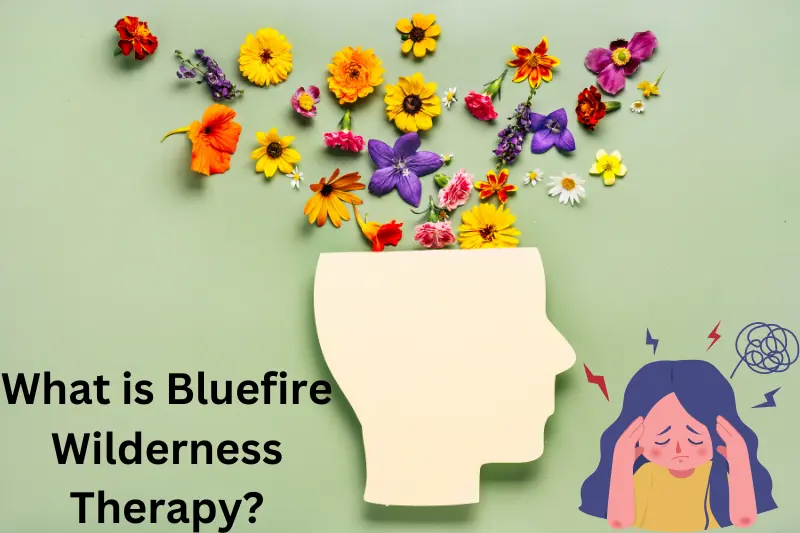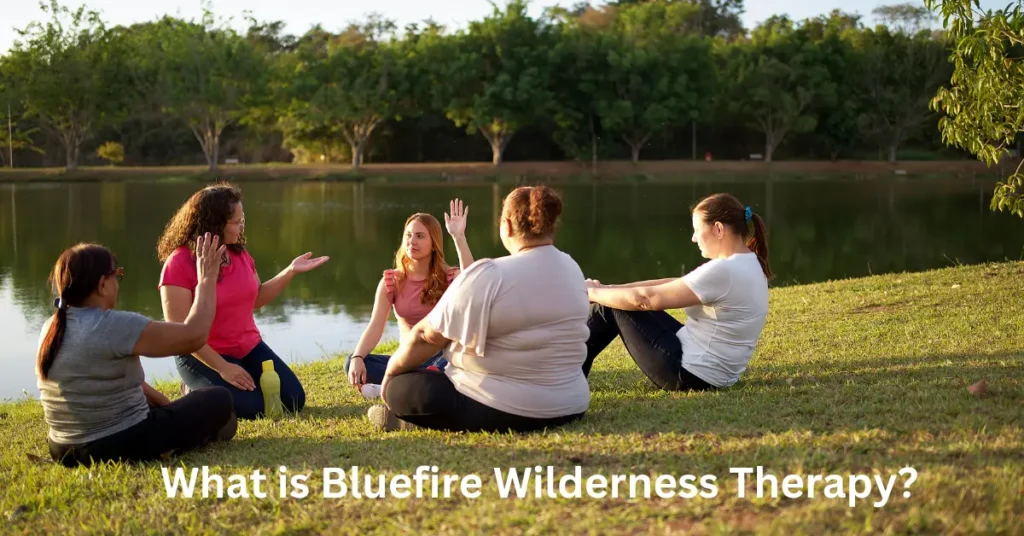Introduction
Bluefire Wilderness Therapy is a program designed to help troubled youth. It uses nature and adventure to foster growth and healing. The program offers a unique approach to therapy, combining traditional counseling with outdoor activities.
It addresses various emotional, behavioral, and mental health issues by immersing participants in a natural environment to reconnect with themselves and others.
What is Bluefire Wilderness Therapy?

Bluefire Wilderness Therapy is a therapeutic program for adolescents and young adults. It targets those struggling with emotional, behavioral, and mental health issues. The program operates in the wilderness, offering a fresh and natural setting for healing.
The natural setting is chosen because it reduces distractions, allowing participants to focus on their personal growth and therapeutic goals.
How It Works
Assessment
Each participant undergoes a thorough assessment, which helps the staff understand their specific needs and challenges. The assessment includes psychological evaluations and interviews with the participant and their family.
It also involves detailed questionnaires and, sometimes, diagnostic tests to ensure a comprehensive understanding of the participant’s situation.
Personalized Plan
Based on the assessment, a personalized treatment plan is created. This plan includes goals and strategies tailored to the individual. It addresses specific areas of concern and outlines the steps needed to achieve these goals.
The plan is dynamic, adjusting as the participant progresses through the program to ensure it meets their evolving needs.
Therapeutic Activities
Participants engage in outdoor activities like hiking, camping, and rock climbing, which help build resilience, teamwork, and self-confidence.
The challenges faced during these activities mirror real-life challenges, teaching participants how to navigate difficulties. Physical activities also promote fitness and health, contributing to overall well-being.
Counseling Sessions
Alongside outdoor activities, participants attend regular counseling sessions. These sessions help address their emotional and mental health issues. Counselors use evidence-based therapeutic techniques to support the participants’ healing process.
Individual therapy provides personalized attention, while group therapy fosters community and shared understanding.
Skill Building
The program also focuses on teaching life skills. Participants learn communication, problem-solving, and coping strategies essential for managing everyday stress and building healthy relationships.
Practical skills, such as cooking and wilderness survival, are also taught, giving participants a sense of independence and competence.
Benefits of Bluefire Wilderness Therapy
Nature’s Healing Power
Being in nature has a calming effect. It reduces stress and anxiety, promoting overall well-being. The serene environment allows participants to disconnect from their daily stresses and focus on healing.
Exposure to natural settings has improved mood and cognitive function, enhancing the therapeutic process.
Adventure Therapy
Engaging in challenging outdoor activities helps build physical and emotional strength. It teaches participants to face and overcome obstacles. Adventure therapy encourages stepping out of comfort zones, which fosters growth and resilience.
The sense of achievement from completing challenging activities boosts self-esteem and confidence.
Personal Growth
The program encourages self-reflection and personal growth. Participants learn more about themselves and develop a stronger sense of identity. This self-awareness is crucial for making positive changes in their lives.
The therapeutic process helps participants identify and challenge negative thought patterns and behaviors.
Teamwork and Social Skills
Working in groups fosters teamwork and improves social skills. Participants learn to communicate and collaborate effectively, which are valuable in personal and professional relationships.
The group setting provides a supportive network where participants can practice and refine their social interactions.
You may also like this:
Niles Garden Circus Tickets – Don’t Miss Out!
Ok jaat.in – Explore Vast Music Library
Health Cloud at TechAsia24.in – Enhanced Patient Care
Holyscript.online Lifestyle – Embrace Wellness
Who Can Benefit?
Adolescents and Young Adults
Bluefire Wilderness Therapy is ideal for adolescents and young adults facing depression, anxiety, or trauma. The program provides a safe space for them to explore their emotions and find healing.
The structured environment and professional support help guide them through their struggles.
Behavioral Issues
Those with behavioral issues such as defiance or substance abuse can also benefit. The structured environment and therapeutic activities help address these issues constructively.
The program emphasizes accountability and positive behavior change, assisting participants to develop healthier habits.
Low Self-Esteem and Poor Social Skills
Individuals struggling with low self-esteem or poor social skills gain confidence and learn practical ways to interact with others. The supportive community at Bluefire fosters a sense of belonging and acceptance.
Social skills training integrates daily activities, providing practical experience and feedback.
A Day in the Life
Morning Activities
A typical day at Bluefire Wilderness Therapy involves a mix of activities. Participants might start with a group hike, which sets a positive tone for the day and encourages physical activity.
Morning activities energize participants and prepare them for the day’s challenges.
Counseling Sessions
After the hike, participants attend counseling sessions. These sessions provide an opportunity to discuss their feelings and progress with a trained therapist. Group therapy sessions may also occur, offering peer support and shared experiences.
Combining individual and group therapy addresses a wide range of therapeutic needs.
Afternoon Activities
Afternoons could include team-building exercises or survival skills training. These activities teach practical skills and foster a sense of accomplishment.
Participants learn how to set up a campsite, build a fire, and navigate the wilderness, which boosts confidence and encourages independence.
Evening Reflection
Evenings are often spent around a campfire, reflecting on the day’s experiences. This time is used for journaling, sharing stories, and setting goals for the next day.
The reflective practice helps consolidate learning and personal growth. It provides a peaceful end to the day, promoting relaxation and introspection.
Success Stories
Personal Transformations
Many participants have found success through Bluefire Wilderness Therapy. They report improved mental health, relationships, and a renewed sense of purpose.
The immersive and supportive environment allows for significant personal transformations. Success stories highlight the program’s impact on self-esteem, coping skills, and overall well-being.
Family Testimonials
Parents also notice significant positive changes in their children after completing the program. They often share testimonials about their child’s improved behavior, increased confidence, and better coping strategies.

Families appreciate the program’s comprehensive approach and the lasting changes it brings about.
Pros and Cons
| Pros | Cons |
| Immersive nature experience fosters deep healing | Can be expensive, depending on the program |
| A combination of adventure and therapy is effective | Wilderness settings may be challenging for some |
| Personalized treatment plans tailored to individual needs | Away from home and family for extended periods |
| Focus on life skills and personal growth | Requires physical fitness and willingness to participate |
| Supportive group environment | Not suitable for individuals with severe medical conditions |
| Builds resilience and self-confidence | Limited access to regular medical facilities |
| Evidence-based therapeutic techniques | May not appeal to those uncomfortable with outdoor activities |
| Enhances social skills and teamwork | Can be emotionally intense and demanding |
| Professional and experienced staff | Weather conditions can impact daily activities |
| Long-term positive outcomes | Requires a commitment to the program’s structure and rules |
FAQs
1. What age group does Bluefire Wilderness Therapy cater to?
2. How long does the program last?
3. What kind of issues does the program address?
4. Is there any follow-up after the program ends?
5. How safe is the program?
6. What qualifications do the staff have?
7. Can parents visit during the program?
8. What is the success rate of the program?
9. What should participants bring with them?
10. How is the food and nutrition managed?
Bonus Points
Family Involvement:
Although participants are away from home, family involvement is crucial to the program. Family therapy sessions help rebuild relationships and ensure long-term success. This involvement ensures that the progress made during the program continues once the participant returns home.
Academic Support:
The program includes academic support for adolescents to ensure they do not fall behind in their studies. This may include tutoring and structured study times. This focus on education helps participants maintain their academic progress and ease the transition back to school.
24/7 Support:
Participants have access to support around the clock. The staff is always available for assistance and guidance, ensuring a safe and nurturing environment. This constant support helps participants feel secure and cared for throughout their stay.
Holistic Approach:
The program takes a holistic approach to healing, addressing physical, emotional, and mental health needs. This comprehensive care ensures that all aspects of a participant’s well-being are considered and treated.
Peer Support:
The group setting fosters strong peer relationships. Participants support each other through shared experiences and challenges, building a network of lasting friendships. This peer support is invaluable for mutual encouragement and understanding.
Experiential Learning:
Learning through experience is a core component of the program. Hands-on activities and real-life challenges teach participants practical skills and personal insights. This learning method is often more impactful and memorable than traditional classroom instruction.
Mindfulness Practices:
Mindfulness and meditation are incorporated into the daily routine. These practices help participants develop greater self-awareness and emotional regulation. Mindfulness exercises promote mental clarity and relaxation, aiding in the therapeutic process.
Adventure Therapy Integration:
Adventure activities are seamlessly integrated with therapeutic goals. Whether climbing a mountain or navigating a river, each activity is designed to challenge and inspire growth. This integration makes therapy engaging and dynamic.
Customizable Programs:
The program can be customized to meet specific needs. Whether addressing a particular issue or focusing on specific skills, the flexibility ensures that each participant receives the most effective care. Customizable programs enhance the relevance and impact of the therapy.
Alumni Network:
Graduates of the program become part of an alumni network. This community offers ongoing support and resources, helping participants continue their growth and maintain connections. The alumni network provides a sense of continuity and belonging.
Conclusion
Bluefire Wilderness Therapy offers a unique and practical approach to healing. By combining traditional therapy with the power of nature, it helps troubled youth overcome their challenges. The program fosters personal growth, resilience, and a brighter future for its participants. With its comprehensive and supportive environment, Bluefire Wilderness Therapy provides the tools and experiences necessary for lasting change and improved well-being.
Whether dealing with emotional struggles, behavioral issues, or simply needing a reset, this program offers a pathway to recovery and a renewed sense of purpose.
You may also like this:
Luxury Fintechzoom – Benefits & Exclusive Services
Prekldača – An Essential Guide
314159u – Explore Pi’s Role in Branding and Education
Myflexbot – Your Ultimate Tool for Automation
